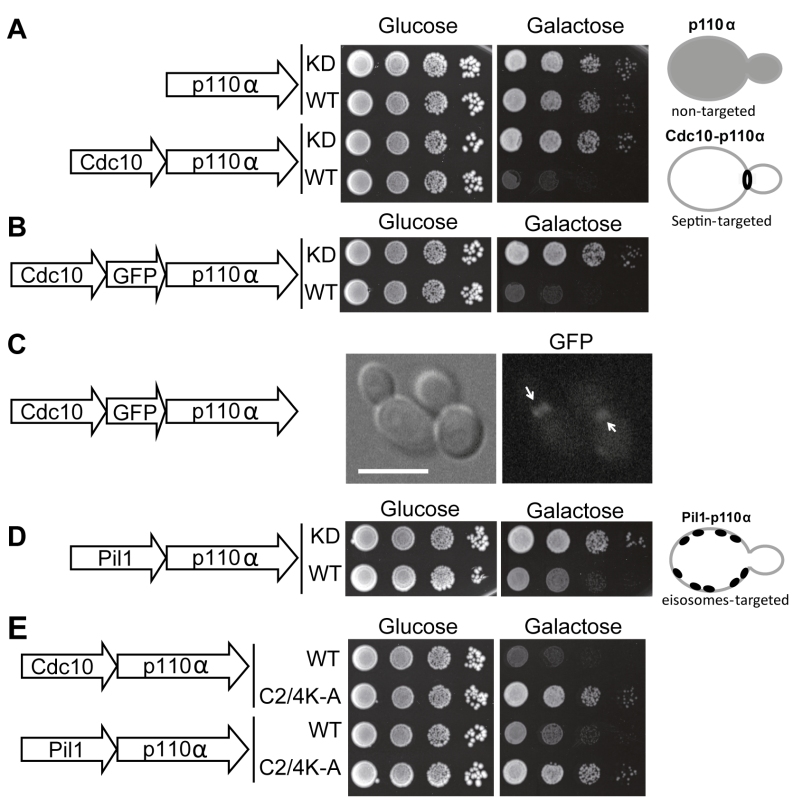Back to article: A humanized yeast-based toolkit for monitoring phosphatidylinositol 3-kinase activity at both single cell and population levels
FIGURE 1: Effects on yeast growth of non-targeted and targeted p110α versions. (A) Ten-fold serial dilutions of wild type YPH499 cells bearing plasmids YCpLG-PI3Kα(K802R) [p110α(K802R)], YCpLG-PI3Kα (p110α), YCpLG-Cdc10-p110α(K802R) or YCpLG-Cdc10-p110α, respectively. Cells were cultured at 30°C on SD (Glucose) or SG (Galactose) agar for induction of p110α expression. Expressed fusions are indicated in the corresponding sketches at the left. (B) Yeast agar drop growth assays as in (A), but of YCpLG-Cdc10-GFP-p110α(K802R) or YCpLG-Cdc10-GFP-p110α representative transformant clones. (C) Bright field and equivalent GFP fluorescence microscopy images of cells expressing the triple fusion protein [Cdc10-GFP-p110α-WT]. The arrows indicate localization at the septin ring at the mother-bud neck. The scale bar represents 5 µm. (D) Yeast growth assay of representative transformant clones bearing plasmids YCpLG-Pil1-p110α(K802R) or YCpLG-Pil1-p110α. (E) Growth of representative yeast clones expressing either wild type or C2-domain mutant (C2/4K-A) p110α versions of the Cdc10-p110α or Pil1-p110α fusion proteins, from plasmids YCpLG-Cdc10-p110α, YCpLG-Cdc10-p110α C2/4K-A, YCpLG-Pil1-p110α or YCpLG-Pil1-p110α C2/4K-A, as indicated.

